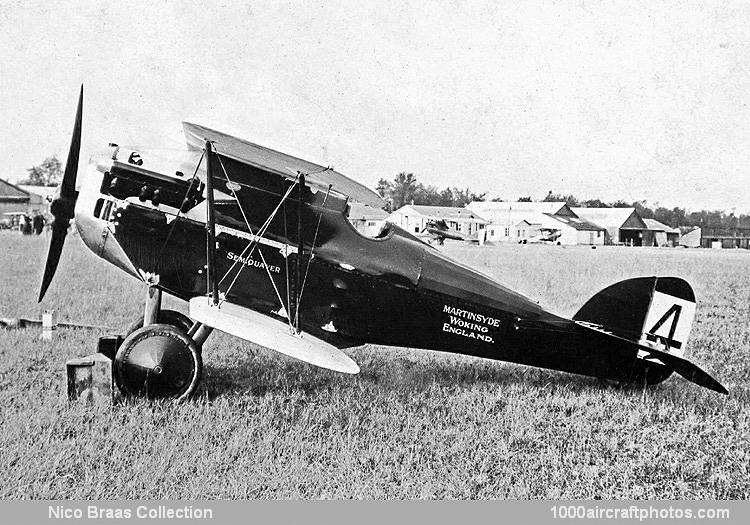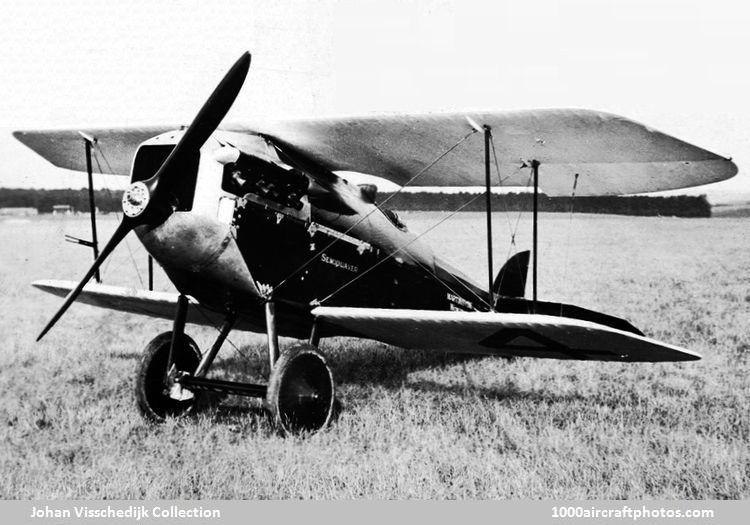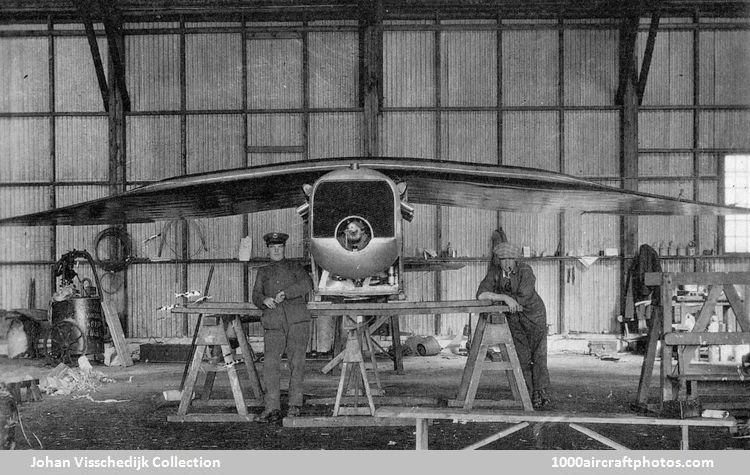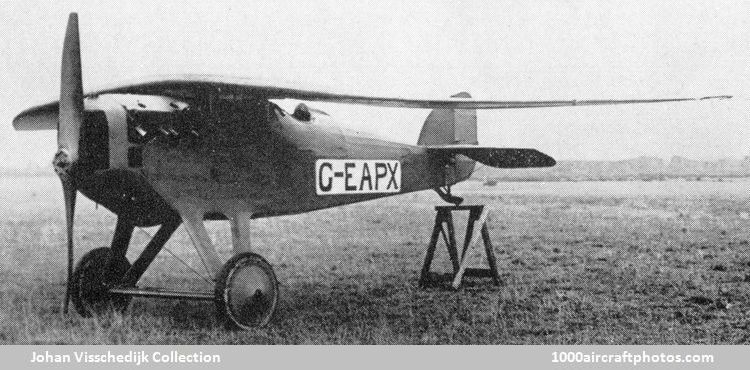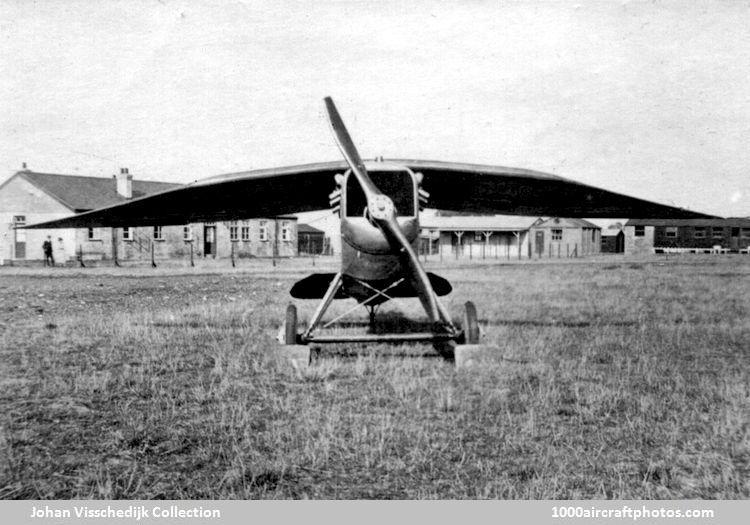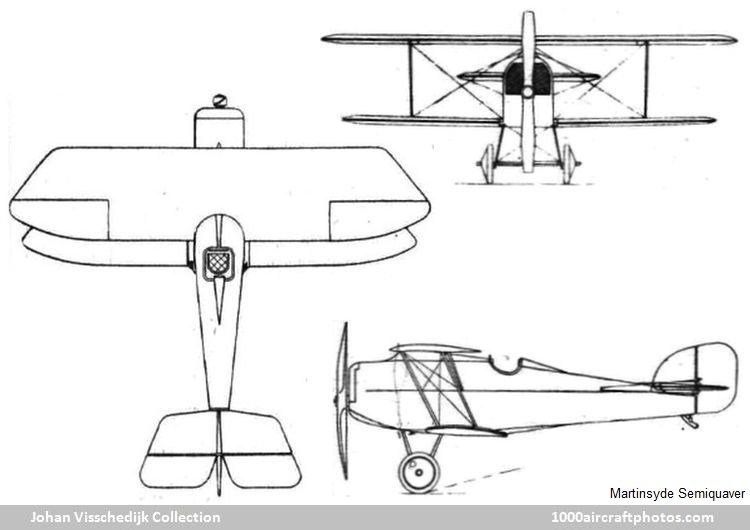03/15/2017. Remarks by
Johan Visschedijk: "Immediately after WW I, Martinsyde Ltd. produced several civil types at Brooklands and at Woking, UK, most of which derived from the
F.4 single seat fighter.
The last new type built by Martinsyde was a racing machine, resembling a scaled-down F.4 and known as the Semiquaver. Of wooden construction, the single-bay tractor biplane had an upper wing of slightly greater span and chord which was mounted on top of the rectangular-section fuselage. The entire aircraft was covered with fabric apart from the plywood that covered the fuselage front. Power plant was a 300 hp Hispano-Suiza eight-cylinder liquid-cooled V-engine. It had a span of 20 ft 2 in (6.15 m), a length of 19 ft 3 in (5.87 m), and a wing area of 302 sq.ft (28.06 sq.m).
Flown by F.P. Raynham, the Semiquaver set up a British record of 161.43 mph (259.80 kmh) over a measured 1,094 yards (1,000 m) during Martlesham trials on March 21, 1920, and was later exhibited at the Seventh International Aero Exhibition”, held at Olympia, West-London, England, July 9 to 22, 1920.
Semiquaver at 1920 Aerial Derby (
Johan Visschedijk Collection)
In the hands of Frank T. Courtney it won the Aerial Derby at Hendon on July 28, 1920, at 153.45 mph (246.95 kmh), but turned over on landing at the end of the race, Courtney escaped injuries. Short-span wings were then fitted and F.P. Raynham towed it over 300 mls (480 km) behind a car from Brooklands to Étampes, France for participation in the Gordon Bennett Race of September 28. Due to a broken fuel pump Raynham did not finish the race.
Semiquaver with Alula wing (
Johan Visschedijk Collection)
In 1921 the Semiquaver was fitted with the patented Alula cantilever wing and since has been referred to as the Semiquaver Alula, Semi-Alula-Quaver, Alula Monoplane or Handalula.
(G-EAPX)
Johan Visschedijk Collection)
However, it was registered G-EAPX as "Martinsyde Semiquaver with Alula wing" on July 14. Listed as owner was the Commercial Aeroplane Wing Syndicate, of which Dutchman Alexander Albert Holle was one of the directors. Holle designed the Alula wing which had a span of 28 ft 6 in (8.69 m) and a wing area of 106.25 sq.ft (9.87 sq.m).
Semiquaver with wider landing gear (
Johan Visschedijk Collection)
As the new wing arrangement lifted the center of gravity, the aircraft received an landing gear of wider track.
An Alula wing had been tested at Farnborough in June with a very negative outcome, it was too flexible and had a load factor of only 1.75 (meaning the wing would collapse in a banked turn of some 50°). Fitted with another wing the aircraft was to participate in the
Aerial Derby on July 16, however, after taxiing trials on the fifteenth, pilot Frank Courtney declined to fly the aircraft as the wing was still "wobbled in all directions". It is not known how many flights the replacement pilot Reginald W. Kenworthy had made before he made an unconvincing demonstration flight for the invited aviation dignities and press at Northolt near London on October 12, 1921. Subsequently the project was cancelled."
